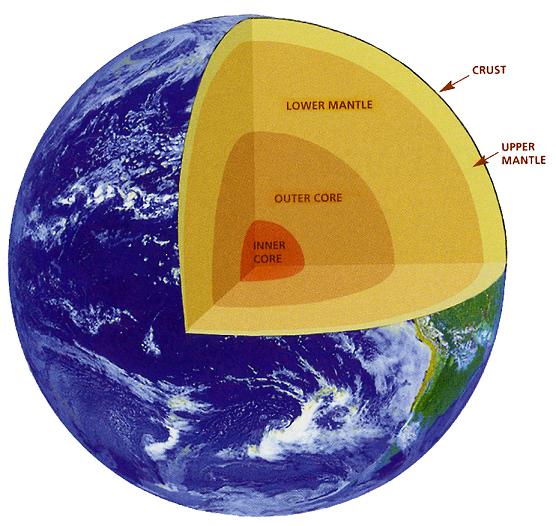.

Finding habitable, Earth-like planets is a Holy Grail of astrobiology. But so far the hunt has been something of a boon and bust.
'Super-Earths'--rocky planets slightly larger than our own--are particularly common outside our Solar System. Some have even been found in the habitable zone--the area around a star where a planet could have liquid water on its surface.
But because of their size, scientists have assumed that super-Earths should be water worlds. Their massive gravity would flatten their topography, letting oceans overflow their basins and inundate the planet.
Now a new study by Nicolas Cowan, at Northwestern University, and Dorian Abbot, at the University of Chicago, suggests this may not be the case.
"We often imagine that the water will end up at the surface--at least that's the standard picture for exoplanets," Cowan said. "But on Earth, the water is partitioned between two reservoirs: the ocean and the mantle. That interior reservoir can be comparable in size, if not bigger, than the surface reservoir."
In their new model, Norman and Abbot took into account the fact that seafloor pressure and gravity are related. “These massive planets have enormous seafloor pressure, and this force pushes water into the mantle,” Cowan said in a statement. “We can put 80 times more water on a super-Earth and still have its surface look like Earth.”
"There's also a simple mechanism for moving the water from the surface to the interior--plate tectonics," Conan said. Most tectonically active planets—regardless of mass—will have both oceans and exposed continents, the authors concluded. Their paper will be published on Jan. 20 in The Astrophysical Journal.
The exposed continents play a crucial role in maintaining a stable climate. Together with the presence of water, they act as a sort of long range geochemical thermostat.
This process is tied to a deep carbon cycle, Cowan explained, which moves carbon through our planet much like a conveyer belt. Here's how it works. Volcanoes release carbon dioxide into the atmosphere, a greenhouse gas which warms the planet. But the hotter the planet, the more rainfall you get. That CO2-loaded rain then chemically reacts with the surface, creating carbonate rocks. That chemical process pulls the CO2 out of the atmosphere, cooling down the planet. And with plate tectonic, the carbonate rocks eventually make it back into the mantle, closing the carbon loop.
"Somehow our Earth has maintained a relatively stable climate, even though our sun gets 10% brighter every billion years," Cowan said. "This weathering thermostat is our best guess for how this happens."
On fully flooded water worlds, this process could not occur--which is why Cowan and Abbot's new model suggests that super-Earths, with potentially exposed land, may be more habitable than previously thought.
However, the study has two major caveats. First, super-Earths may not have plate tectonics; and second, we don't know how much water is stored in our Earth's mantle. "There may be about one ocean worth of water in the mantle, but that's a very rough guess," Cowan said.
“These are the two things we would like to know better to improve our model,” he said. “Our model is a shot from the hip, but it’s an important step in advancing how we think about super-Earths.”

Our Earth may store about one ocean worth of water in its mantle. Image Credit: University of Maryland
Quelle: ASTROBIOLOGY-MAGAZINE
